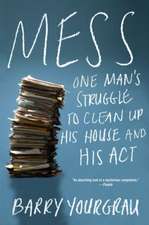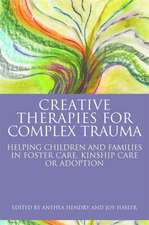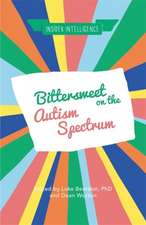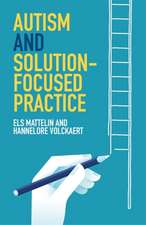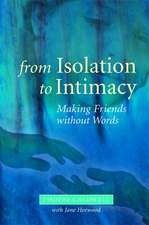Homicide Survivors: Misunderstood Grievers: Death, Value and Meaning Series
Autor Judie Bucholzen Limba Engleză Paperback – 3 ian 2019
| Toate formatele și edițiile | Preț | Express |
|---|---|---|
| Paperback (1) | 458.23 lei 6-8 săpt. | |
| Taylor & Francis – 3 ian 2019 | 458.23 lei 6-8 săpt. | |
| Hardback (1) | 1408.45 lei 6-8 săpt. | |
| Taylor & Francis – 15 iun 2002 | 1408.45 lei 6-8 săpt. |
Din seria Death, Value and Meaning Series
- 5%
 Preț: 440.62 lei
Preț: 440.62 lei - 5%
 Preț: 358.12 lei
Preț: 358.12 lei - 18%
 Preț: 906.17 lei
Preț: 906.17 lei - 21%
 Preț: 906.36 lei
Preț: 906.36 lei - 5%
 Preț: 457.36 lei
Preț: 457.36 lei - 17%
 Preț: 286.16 lei
Preț: 286.16 lei - 21%
 Preț: 243.27 lei
Preț: 243.27 lei - 14%
 Preț: 717.11 lei
Preț: 717.11 lei - 17%
 Preț: 246.98 lei
Preț: 246.98 lei - 15%
 Preț: 519.83 lei
Preț: 519.83 lei - 12%
 Preț: 333.67 lei
Preț: 333.67 lei - 15%
 Preț: 814.34 lei
Preț: 814.34 lei - 5%
 Preț: 488.71 lei
Preț: 488.71 lei - 17%
 Preț: 332.31 lei
Preț: 332.31 lei - 18%
 Preț: 903.90 lei
Preț: 903.90 lei - 22%
 Preț: 167.16 lei
Preț: 167.16 lei - 18%
 Preț: 950.54 lei
Preț: 950.54 lei - 18%
 Preț: 906.17 lei
Preț: 906.17 lei - 5%
 Preț: 329.16 lei
Preț: 329.16 lei - 13%
 Preț: 1058.34 lei
Preț: 1058.34 lei - 5%
 Preț: 487.71 lei
Preț: 487.71 lei - 5%
 Preț: 341.24 lei
Preț: 341.24 lei - 5%
 Preț: 191.96 lei
Preț: 191.96 lei - 5%
 Preț: 401.47 lei
Preț: 401.47 lei - 5%
 Preț: 718.31 lei
Preț: 718.31 lei - 5%
 Preț: 656.10 lei
Preț: 656.10 lei - 5%
 Preț: 358.60 lei
Preț: 358.60 lei - 5%
 Preț: 401.47 lei
Preț: 401.47 lei - 5%
 Preț: 443.81 lei
Preț: 443.81 lei - 14%
 Preț: 782.70 lei
Preț: 782.70 lei - 18%
 Preț: 722.06 lei
Preț: 722.06 lei - 5%
 Preț: 369.92 lei
Preț: 369.92 lei - 21%
 Preț: 813.90 lei
Preț: 813.90 lei - 5%
 Preț: 329.99 lei
Preț: 329.99 lei - 5%
 Preț: 653.21 lei
Preț: 653.21 lei - 5%
 Preț: 333.46 lei
Preț: 333.46 lei - 5%
 Preț: 331.08 lei
Preț: 331.08 lei - 12%
 Preț: 909.31 lei
Preț: 909.31 lei
Preț: 458.23 lei
Preț vechi: 482.35 lei
-5% Nou
Puncte Express: 687
Preț estimativ în valută:
87.68€ • 91.55$ • 72.57£
87.68€ • 91.55$ • 72.57£
Carte tipărită la comandă
Livrare economică 05-19 aprilie
Preluare comenzi: 021 569.72.76
Specificații
ISBN-13: 9780415784924
ISBN-10: 0415784921
Pagini: 181
Dimensiuni: 152 x 229 x 10 mm
Greutate: 0.45 kg
Ediția:1
Editura: Taylor & Francis
Colecția Routledge
Seria Death, Value and Meaning Series
Locul publicării:Oxford, United Kingdom
ISBN-10: 0415784921
Pagini: 181
Dimensiuni: 152 x 229 x 10 mm
Greutate: 0.45 kg
Ediția:1
Editura: Taylor & Francis
Colecția Routledge
Seria Death, Value and Meaning Series
Locul publicării:Oxford, United Kingdom
Public țintă
Professional Practice & DevelopmentCuprins
Part One
This section contains 10 stories from homicide survivors.
Chapter 1
Jack describes how his granddaughter was murdered. After this traumatic experience, he dedicated his life to helping homicide survivors. The path through the criminal justice system and Parents of Murdered Children (POMC) are presented.
Chapter 2
Miriam became a Victim Witness Coordinator after her son was tortured then murdered. The Victim Witness Program, Victim Impact Statement, Center of Crime Victim Services, and Megan's Law are reviewed.
Chapter 3
Sue believes her daughter was killed as a result of their daughter's boyfriend's drug related activities. Sue's health has deteriorated since the murder. The 27 Problems of Homicide Survivors are mentioned.
Chapter 4
It took 16 years to prove Ray's daughter was murdered. Issues addressed include Homicide Survivor's Rights, the medical examiner/coroner, autopsies, and victimization.
Chapter 5
Mike's brother's body was found over a year after the murder. Mike and his family never gave up looking for him. Parole and the POMC Parole Block Program are detailed.
Chapter 6
Ron, Jean, and Kim believe that two men live a life of luxury in prison while their son/brother is dead. Issues discussed include policy changes, civil recourse and types of homicide.
Chapter 7
Amanda and Angie's stories involve dangerous lifestyles that often lead to murder. Included are cases solved, Victims of Crime Act of 1984, Crime Victim Compensation, contributory misconduct, and disenfranchisement.
Chapter 8
Rita's mother was murdered during a robbery at work. The Vine Program is discussed.
Chapter 9
Rose's mother was brutally murdered during a robbery at home. Visits from the after life, sense of presence, continued relationships, and linking objects are reviewed.
Chapter 10
Judie's physicians/psychiatrists prescribed anti-depressants, anti-anxiety medication, and sleeping pills to help her "get over" her husband's murder. She was subsequently diagnosed as having "chronic adjustment disorder." Issues of confidentiality and chronic adjustment disorder are detailed.
Part Two
This section contains information about the reactions of the grieving loved ones.
Chapter 11
Themes from the survivor's stories are told.
Part Three
This section contains a summary and offers suggestions to comfort the bereaved.
Chapter 12
Analysis on previous themes is performed. Issues include personal and social consequences of homicide bereavement and personal and social changes of the survivors.
Chapter 13
An explanation of the process of homicide bereavement is given. It is a personal idiosyncratic process, where the personal reality of the loss is different for each individual.
Appendix A - a 19th century letter of comfort to those left behind
Appendix B - a list of support networks
Appendix C - Extensive list of legal terms
This section contains 10 stories from homicide survivors.
Chapter 1
Jack describes how his granddaughter was murdered. After this traumatic experience, he dedicated his life to helping homicide survivors. The path through the criminal justice system and Parents of Murdered Children (POMC) are presented.
Chapter 2
Miriam became a Victim Witness Coordinator after her son was tortured then murdered. The Victim Witness Program, Victim Impact Statement, Center of Crime Victim Services, and Megan's Law are reviewed.
Chapter 3
Sue believes her daughter was killed as a result of their daughter's boyfriend's drug related activities. Sue's health has deteriorated since the murder. The 27 Problems of Homicide Survivors are mentioned.
Chapter 4
It took 16 years to prove Ray's daughter was murdered. Issues addressed include Homicide Survivor's Rights, the medical examiner/coroner, autopsies, and victimization.
Chapter 5
Mike's brother's body was found over a year after the murder. Mike and his family never gave up looking for him. Parole and the POMC Parole Block Program are detailed.
Chapter 6
Ron, Jean, and Kim believe that two men live a life of luxury in prison while their son/brother is dead. Issues discussed include policy changes, civil recourse and types of homicide.
Chapter 7
Amanda and Angie's stories involve dangerous lifestyles that often lead to murder. Included are cases solved, Victims of Crime Act of 1984, Crime Victim Compensation, contributory misconduct, and disenfranchisement.
Chapter 8
Rita's mother was murdered during a robbery at work. The Vine Program is discussed.
Chapter 9
Rose's mother was brutally murdered during a robbery at home. Visits from the after life, sense of presence, continued relationships, and linking objects are reviewed.
Chapter 10
Judie's physicians/psychiatrists prescribed anti-depressants, anti-anxiety medication, and sleeping pills to help her "get over" her husband's murder. She was subsequently diagnosed as having "chronic adjustment disorder." Issues of confidentiality and chronic adjustment disorder are detailed.
Part Two
This section contains information about the reactions of the grieving loved ones.
Chapter 11
Themes from the survivor's stories are told.
Part Three
This section contains a summary and offers suggestions to comfort the bereaved.
Chapter 12
Analysis on previous themes is performed. Issues include personal and social consequences of homicide bereavement and personal and social changes of the survivors.
Chapter 13
An explanation of the process of homicide bereavement is given. It is a personal idiosyncratic process, where the personal reality of the loss is different for each individual.
Appendix A - a 19th century letter of comfort to those left behind
Appendix B - a list of support networks
Appendix C - Extensive list of legal terms
Descriere
Looks at families that have faced murder and how they have dealt with the trauma. This work offers an interpretation of personal accounts of homicide survivors in order to understand the particular nature of homicide bereavement. It offers an unique perspective and experiential base for examining the phenomenon of homicide bereavement.


